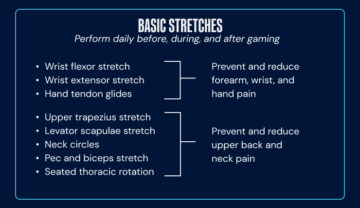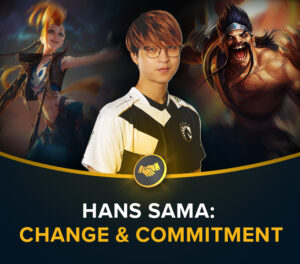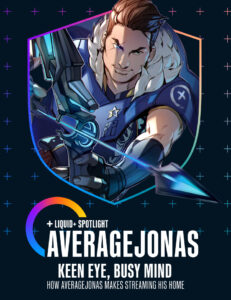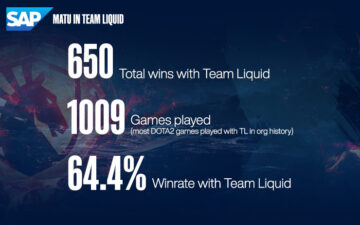Slowly, but surely, more and more marginalized gender folks are making their way into the higher tiers of professional FPS esports. As recently as 2018, it felt like Kim “Geguri” Se-yeon was the only high-profile female athlete competing at the tier 1 level in an FPS. Since then, we’ve witnessed several significant steps towards gender equity in esports. 2020 saw the birth of the entire VALORANT ecosystem, along with its marginalized gender league, Game Changers. Meanwhile in the Apex Legends space, multiple women like Laurice “GuhRL” Habibi and Kornelia ‘Sabz’ Zawistowska compete in the Apex Legends Global Series. Just recently, a woman – Rebels Gamings’ Paula ‘devilasxa’ Blanco – was promoted to a Tier 2 squad with teammates who are all cisgender men.
[embedded content]
A quick primer for anyone unacquainted with Overwatch or Geguri.
These forward steps make it feel like co-ed leagues are an inevitability for several professional esports leagues, which raises the question: What does the move to co-ed mean for marginalized gender players – especially trans players?
In theory, having folks of all genders competing in the same league together would get rid of the need for often-contentious gender confirmation checks and would allow players of any gender to show off their skills. This seems to be how the ALGS operates, allowing rosters to sign players of any gender they see fit to compete at the highest level. But theory and reality aren’t always in sync. The problem is getting to that level isn’t easy for anyone, but it’s particularly brutal for women – cis or trans.
The competitive Apex Legends scene has a rather large gap between the ALGS and any lower-tier or amateur tournaments, which makes getting competitive experience difficult. Beyond that, many of the tier 2 events have drastically smaller prize pools, and combined with playing on unsigned squads, this can make it financially difficult (if not impossible) for older tier 2 player of any gender to play competitively full-time.
This means most tier 2 players are living on a short timeline. As they age, and face more economic pressures and icnreasingly need to push into tier 1 to make a real living. This race against the clock becomes especially hard — prohibitively hard — when coupled with the discrimination, both mild and massive, that women and transgender players experience in esports. These players not only have to prove themselves but routinely against a backdrop of negative comments from audiences and stigmas within team environments. In team games where focus needs to be complete, and where careers are short, these negatives can be the difference between making tier 1 or retiring altogether.
That’s where a league like Game Changers can help.
“I think marginalized gender leagues are crucial to transgender competitors because they become a safe space for us to compete in,” said Shopify Rebellion’s Erika “KP” Lytle. “While it’s been getting so much better recently, there are still a lot of gamers in the co-ed space that hold stereotypical assumptions about women and transgender players.”
Plety of times, those stereotypes are large enough that trans players struggle to find a team in time for an event. Given the ticking clock on a tier 2 esports career, that delay can be brutal. “I can tell you from real experiences that it’s harder to get on some of these teams as a transgender competitor. Some might be discouraged by this process, and that’s where specific leagues dedicated to marginalized gender players encourage them to keep competing and help surround them with similar people.”
VCT Game Changers is a professional, international league for marginalized gender players. It also has an academy league to help newer or younger aspiring pros get experience under their belts and start making names for themselves. Though the Game Changers leagues have had issues surrounding the identification processes for gender non-conforming players in the past, they do offer a space that is explicitly welcome to players who aren’t just cisgender women to practice and grow.
That said, it’s not a secret that leagues like VCT Game Changers and other marginalized gender tournaments (like those organized by Galorants) tend to have a lower ceiling. The signed Game Changers teams that are serious about improving, like the former Cloud9 White roster as well as Team Liquid Brazil, often compete in the open-qualifier events for Tier 2 and 1 leagues to get higher-level practice and tournament experience.
Many of these players aspire to be the best players they can be, period, not just the best Game Changers or best female players, which requires a higher level of practice and competition than what Riot’s MG league can currently provide. This is where the co-ed experience becomes hard to replace. Playing against (or within) the tier 2 teams — usually composed of CIS men — is where GC players get the experience needed to push the ceiling for all marginalized gender squads.
“It’s not a secret that GC is significantly worse in quality of play; for the teams playing in these co-ed events, I believe they have come to the same conclusion that playing against better competition will always push you to be better,” said XSET Purple’s Bob “Bob” Tran.
“I do think though that the goal of any marginalized gender league should be that one day the players can become good enough and have a path to the main league or division with all genders,” KP added. “Keeping these players in a bubble will not be beneficial long term and in my opinion will only increase the stereotypical thoughts some might have of us. I hope that with small baby steps, and a few players at a time, it can be shown that any women or marginalized gender player can hang with the best of the best in the main leagues of all esports.”
Bob is a bit more skeptical about how the future success of trans players in co-ed leagues will impact leagues like VCT Game Changers.
“I believe that when there inevitably are more players of marginalized genders competing at the highest level, it may actually end up creating more hate for the restricted leagues and their players,” Bob said. “Because I have a feeling that ignorant people will continue to be ignorant, and success of transgender females specifically will only add more fuel to the fire for the same ignorant arguments that are regurgitated in present day.”
Both players agree that there are steps that the companies behind the games themselves, and the Tier 1 organizers could take to better support and include marginalized gender players in the future. For Bob, this looks like more vocal support from Riot Games to shut down transphobic hate, and to provide more resources to the Tier 2 (and below) competitive scenes so that they can be successful enough to produce more quality players.
She also wants the North American Game Changers league to reconsider its position on allowing transgender men to compete.
“I recently learned that Game Changers in NA does not allow transgender males – which I believe is an obvious contradiction to their want to be inclusive to marginalized genders – and I’m hoping that changes in future,” Bob said.
KP also thinks that the VALORANT esports organizers should provide more opportunities for marginalized gender players within the Tier 2 scene. Her mind goes to a promotion system for Game Changers teams to move up to the Challengers league.
“I think it’d be a cool idea if the winner of the game changers championship got a chance to be promoted to the next season of challengers (the T2 co-ed league) in their respective region,” KP said. “Looking at last year, G2 Gozen beat us in the finals of GC champs Berlin. This year, if they would’ve been promoted to an EMEA challengers division, it would have been a chance for them to prove their skill in a co-ed space. Maybe some of the players have such good performances that they get looked at by other male-dominated teams. You never know.”
It seems clear that folks who aren’t cis men do need a dedicated space to practice and compete within their respective esports. But those spaces need more institutional support from the game companies themselves, and the organizers behind the scenes need to be constantly learning and evolving their understanding of gender diversity to ensure these leagues are truly as inclusive as they claim. At the same time, unlike in traditional sport spaces, a successful marginalized genders league, is not the only goal. In some ways, it’s a stepping stone towards a more final, more daunting goal.
Plenty of GC players — trans and cis — alike aren’t training just to smash their own leagues, but to create a real co-ed space where they can play on a VCT-winning team. As slow and difficult as that is to shape, as much baggage as comes with it, the dream is there — and closer now to reality than ever.
Writer // Ty Galiz-Rowe
Graphics // Zack Kiesewetter
- SEO Powered Content & PR Distribution. Get Amplified Today.
- PlatoData.Network Vertical Generative Ai. Empower Yourself. Access Here.
- PlatoAiStream. Web3 Intelligence. Knowledge Amplified. Access Here.
- PlatoESG. Automotive / EVs, Carbon, CleanTech, Energy, Environment, Solar, Waste Management. Access Here.
- BlockOffsets. Modernizing Environmental Offset Ownership. Access Here.
- Source: https://www.teamliquid.com/news/2023/06/28/co-ed-game-changers-and-valorants-trans-players
- 1
- 2018
- 2020
- 500
- a
- About
- Academy
- actually
- add
- added
- Against
- age
- ALGS
- alike
- All
- allow
- Allowing
- along
- also
- altogether
- always
- amateur
- American
- an
- and
- any
- anyone
- apex
- Apex Legends
- Apex Legends Global Series
- ARE
- arguments
- as
- aspire
- aspiring
- At
- audiences
- Baby
- backdrop
- BE
- because
- become
- becomes
- been
- behind
- behind the scenes
- believe
- below
- beneficial
- berlin
- BEST
- Better
- between
- beyond
- Birth
- Bit
- bob
- both
- Brazil
- bubble
- but
- by
- CAN
- Career
- Careers
- challengers
- Championship
- chance
- changes
- Checks
- claim
- clear
- closer
- Cloud9
- cloud9 white
- combined
- come
- comes
- comments
- Companies
- compete
- competing
- competition
- Competitive
- Competitive apex
- competitive apex legends
- Competitor
- competitors
- complete
- Conclusion
- confirmation
- constantly
- content
- continue
- cool
- could
- create
- Creating
- Credits
- crucial
- currently
- day
- dedicated
- delay
- difference
- difficult
- discouraged
- Discrimination
- Diversity
- Division
- do
- does
- down
- drastically
- easy
- Economic
- ecosystem
- embedded
- EMEA
- encourage
- end
- enough
- ensure
- entire
- environments
- equity
- especially
- esports
- eSports Leagues
- Event
- events
- EVER
- evolving
- experience
- Experiences
- Face
- feel
- few
- Final
- financially
- find
- Fire
- fit
- Focus
- For
- Former
- Forward
- FPS
- from
- Fuel
- full-time
- future
- G2
- G2 Gozen
- game
- game changers
- Gamers
- Games
- Gaming
- gap
- Gender
- Get
- getting
- given
- Global
- Global Series
- goal
- goes
- good
- Grow
- had
- Hard
- has
- Have
- having
- help
- her
- high-profile
- higher
- highest
- hold
- hope
- hoping
- How
- HTTPS
- i
- idea
- Identification
- if
- Impact
- impossible
- improving
- in
- include
- inclusive
- Increase
- inevitably
- Institutional
- International
- into
- Is
- isn
- issues
- IT
- ITS
- just
- keep
- keeping
- kim
- know
- large
- last
- League
- leagues
- learned
- learning
- Legends
- Level
- like
- Liquid
- living
- Long
- looked
- looking
- looks
- lot
- main
- make
- MAKES
- Making
- many
- massive
- May
- mean
- means
- Meanwhile
- Men
- MG
- might
- mind
- more
- most
- move
- much
- multiple
- my
- na
- names
- need
- needed
- needs
- negative
- negatives
- never
- Next
- North
- not
- now
- obvious.
- of
- off
- offer
- often
- on
- One
- only
- operates
- Opinion
- opportunities
- or
- organized
- organizers
- Other
- Overwatch
- own
- Past
- path
- People
- Performances
- period
- plato
- plato data intelligence
- platodata
- platogaming
- play
- player
- players
- Playing
- Pools
- position
- practice
- present
- primer
- Problem
- Process
- processes
- Produce
- professional
- promotion
- Pros
- prove
- Provide
- push
- quality
- question
- quick
- Race
- raises
- rather
- Real
- Reality
- Rebellion
- recently
- region
- replace
- requires
- Resources
- respective
- restricted
- Riot
- Riot Games
- roster
- Rosters
- routinely
- s
- safe
- Said
- same
- saw
- scene
- scenes
- season
- Secret
- see
- seems
- Series
- several
- shape
- Shopify
- shopify rebellion
- Short
- should
- show
- shown
- sign
- signed
- significant
- significantly
- similar
- since
- skill
- skills
- small
- smaller
- Smash
- So
- some
- Space
- spaces
- specific
- specifically
- Sport
- start
- Steps
- still
- Stone
- success
- successful
- such
- support
- surrounding
- system
- T2
- Take
- Team
- Team Liquid
- Team Liquid Brazil
- TeamLiquid
- teams
- tell
- term
- than
- that
- The
- The Future
- The Game
- their
- Them
- themselves
- then
- theory
- there
- These
- they
- think
- this
- those
- though
- ticking
- tier
- time
- timeline
- times
- to
- together
- tournament
- Tournaments
- towards
- traditional
- Training
- transgender
- truly
- under
- understanding
- unlike
- up
- us
- usually
- VALORANT
- valorant esports
- vct
- VCT Game Changers
- ve
- want
- wants
- was
- way
- ways
- we
- welcome
- well
- What
- when
- where
- while
- white
- WHO
- will
- winner
- with
- within
- witnessed
- woman
- Women
- worse
- would
- XSET
- year
- you
- youtube
- zephyrnet










